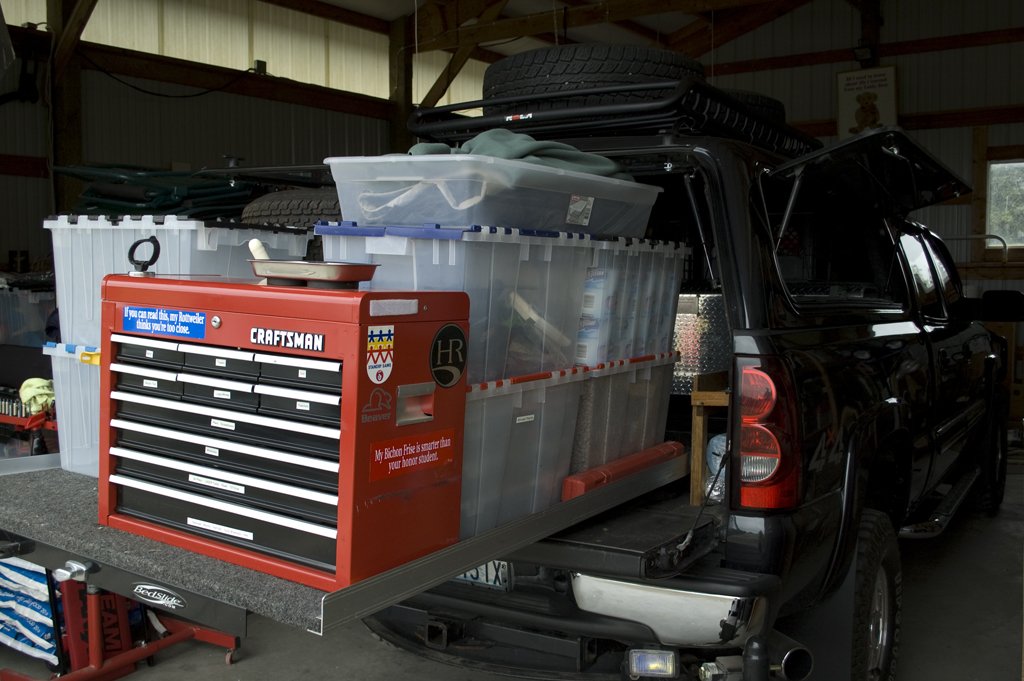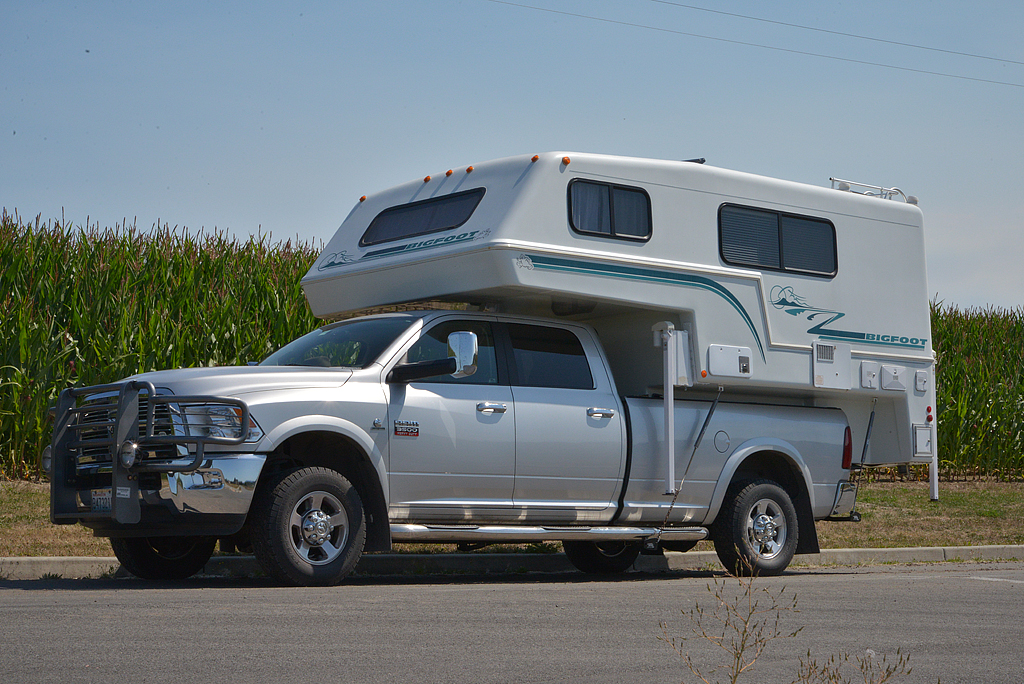I guess so, although my opening statement should have given them a clue that we weren't talking about the normal run up the Alaska Highway . . .
I wrote:
Some of you may remember that we drove 3000 miles of haul roads in the Arctic in 2009 towing our Arctic Fox 29V. The Arctic Fox was quite comfortable and survived with only minor damage, but it was too big to go everywhere we wanted to go - so we added a Bigfoot camper to the fleet for our second trip to the Arctic.
:C
Our goal in 2009 was celebrate our 25th Anniversary by driving the most northern roads in North America as far north as possible in a 4X4 - a potential challenge in itself - and tow our Arctic Fox 29V the entire way. We spent a year & about $20K preparing the truck and trailer for the trip.
We'd driven to Alaska in 2004, so we knew the general lay of the land and the conditions that most folks encounter - easy - but we knew that we'd encounter the kinds of conditions that Garry described. It was obvious that tires would be a critical part of our preparation.
We did considerable research on tires beforehand, including studying the tires used by couples that had made circumnavigations (driven around the world). We were heavily influenced by the story of a couple that had a custom built 6X6 Land Rover that destroyed roughly 20 tires just during testing. Land Rover connected them with Firestone, who sponsored them with new & especially rugged tire that Firestone had just come out with - the Destination MT. They made it over half way around the world before their first failure caused by a broken tree branch that skewered a tire while fording a stream. I contacted Firestone and connected with an executive that had personally driven both the Dempter and the Dalton Highways, so he had first-hand experience with the conditions we'd encounter.
We upgraded the wheels on the Chevy to Alcoa forged aluminum and installed 265-section Destination MTs on them. The trailer got a set of LT235/85-16's mounted on new steel wheels. Some of the roads we traveled are extremely remote with VERY little traffic. Like the road from Yellowknife, NWT to Fort Nelson, BC. I think we saw something like 12 other vehicles during the 3 days we spent on that road and nearly half of those were broken down and abandoned. In other words, you're on your own in a big way.
Hence our 8 spares, all of them mounted and ready for service. Two on the roof of the truck's canopy, three inside on the Bedslide, two under the Arctic Fox (we added a second tire carrier to the chassis of the trailer) and the truck's OEM spare. Fortunately, we never had a tire failure, so we didn't use any of the spares. We carried LOTS of spare everything. Several bins of spare parts for both truck and trailer, plus extra water and fuel. We spent many hours repairing broken and severely worn stuff, but that's another story. We're still selling off stuff from that trip - anyone need a Pullrite 20K trailer hitch?

Here's what the rig weighed the morning we left home:
Chevy K2500HD
* Front axle 4,290
* Rear axle 6,310 (includes AF tongue weight)
* Chevy GVW 10,600
Arctic Fox 29V
* Front axle 5,000
* Rear axle 4,850
* Tongue wt 1,190
* AF GVW 11,040
GCVW 20,450
That's 4,770# heavier than the Chevy & Arctic Fox weighed the day we bought them (actual weights, not brochure weights). We're not known for traveling light! :B
Note how the rear of the Chevy was loaded nearly as heavily as it would be with a truck camper. Tire wear was a real issue. The Destination MT's come with 19/32 of tread, compared to the 8/32 for ST tires and 12-13/32 of most AT tires. The tires were worn down to 4/32 to 6/32 when we got home 9,000 miles later. The rear tires of the truck wore quite rapidly which shouldn't be a surprise considering how heavily they were loaded and how they also had to do the work of pulling the 11K trailer. Interestingly, the rear tires of the trailer also wore about twice as fast as the front tires, apparently from the freshly upset shale gravel. Both truck and trailer tires had to be rotated.
Back in 2009, we thought we'd do that once and be done with it. Now, we want to go back. But, we want to be able to get to some even more remote places we couldn't get to when we were almost 60' long, hence the camper. That's all well and good, but it's simply not possible to carry much in the way of spares in a camper, so we need to make it as bullet-proof as possible to start with.
Photo of the Bigfoot on our Ram 3500. There's no pressure in air bags when we took this photo. Also, the fuel tank will be moved 6.5" forward which will allow us to move the camper further forward in the bed.

Grit dog wrote:
Well you're talking about a whole different set of conditions than most everyone imagined, I think.
Yeah, get some HD tires and wheels if you're doing thousands of miles of off roading in the most remote area in the country!
Oh and buy the spare too!


